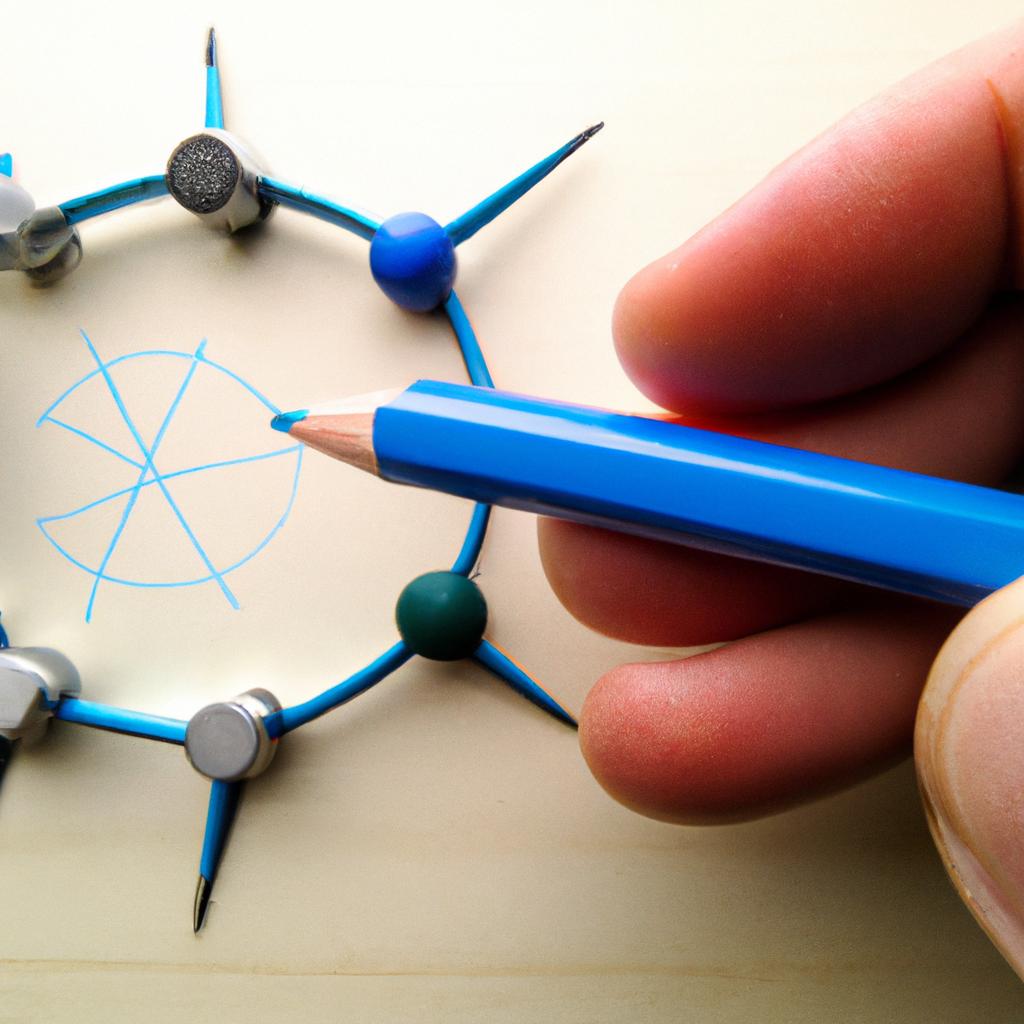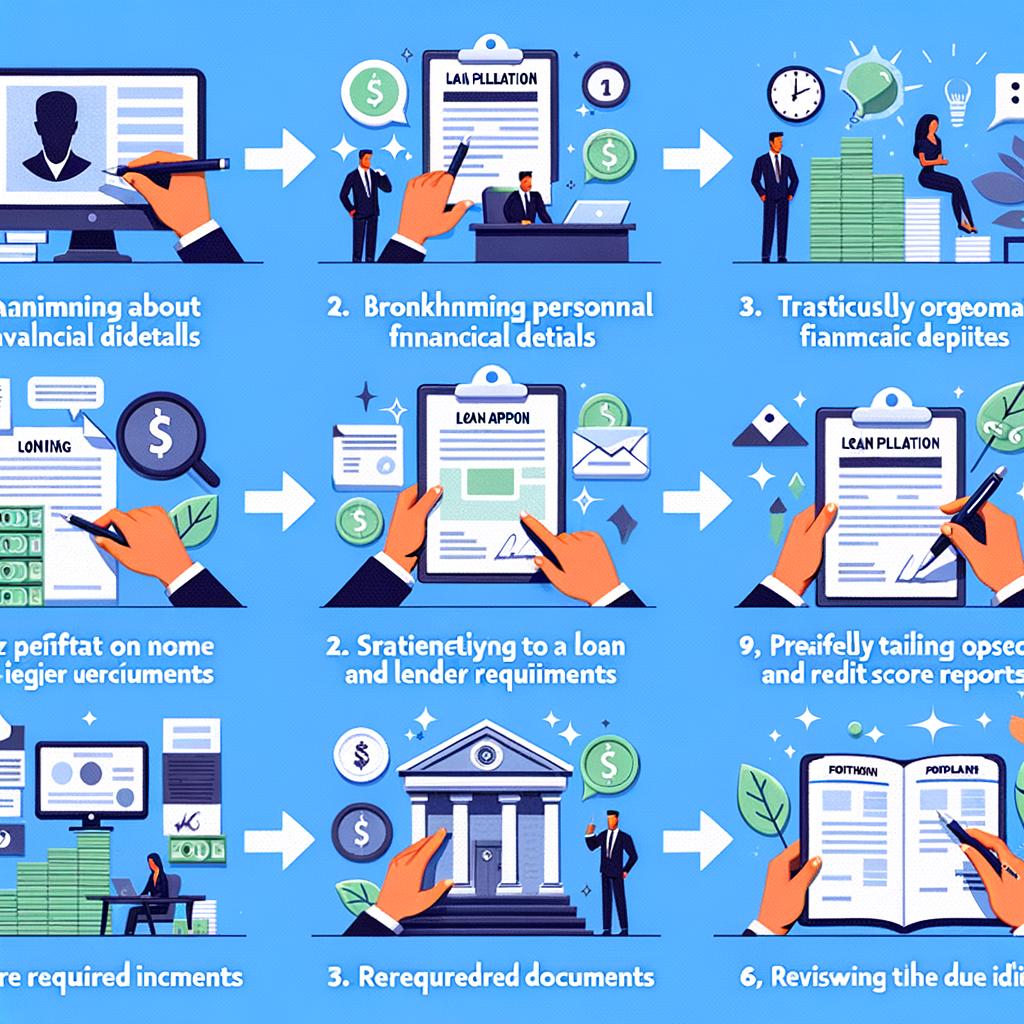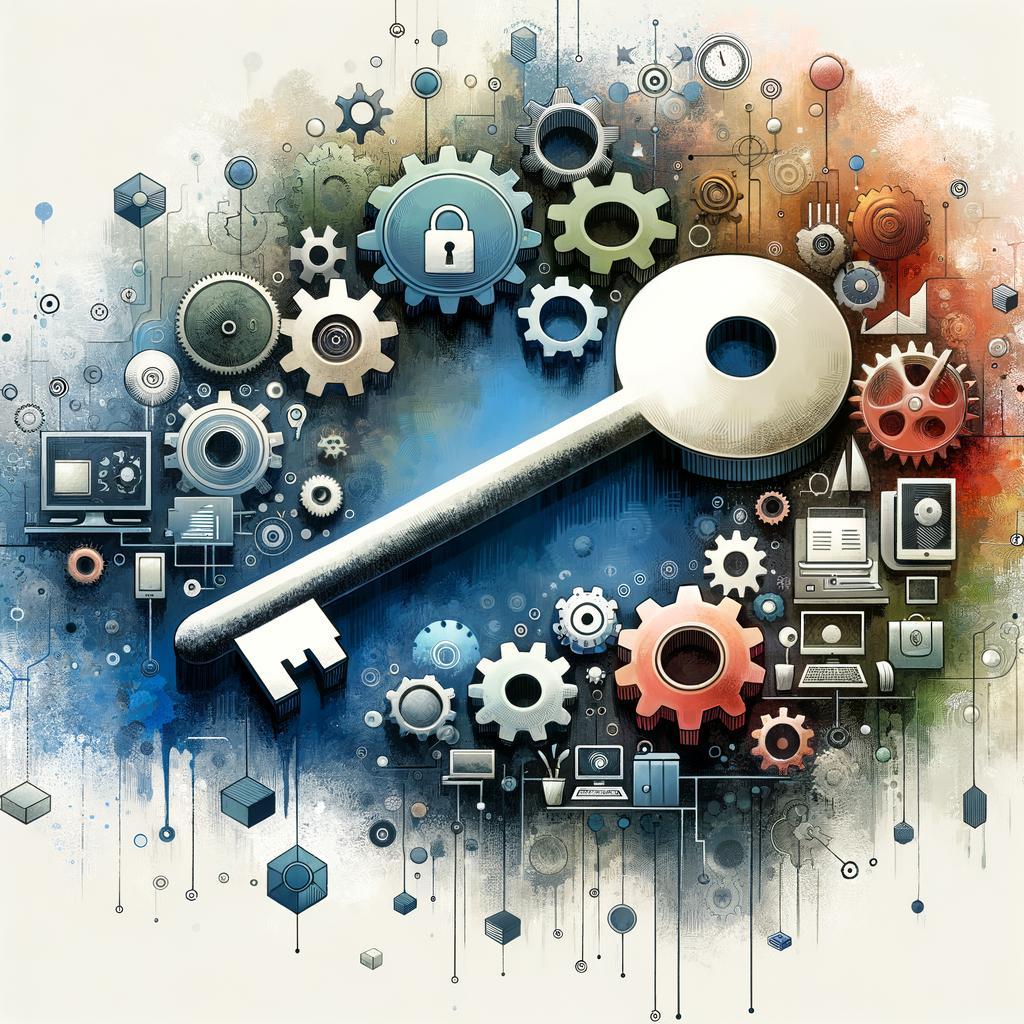Acquiring the right equipment can often mean the difference between the success and failure of a business venture. From heavy machinery for construction projects to state-of-the-art medical devices for a healthcare practice, the tools you need aren’t always within arm’s reach financially. That’s where an equipment loan comes into play. But navigating the borrowing process can feel somewhat like trying to crack an ancient code. Fear not! In the following guide, we’ll demystify the lending labyrinth, offering clear, step-by-step directions to secure the equipment loan that will take your business from aspiration to operation. Whether you’re a seasoned entrepreneur or a hopeful startup, this comprehensive roadmap is your key to unlocking opportunities and fueling your growth.
Table of Contents
- Navigating the Equipment Loan Landscape
- Deciphering Loan Requirements: What Lenders Look For
- Crafting a Compelling Loan Application: Step-by-Step Guide
- Maximizing Your Chances: Insider Tips and Strategies
- Q&A
- In Conclusion

Navigating the Equipment Loan Landscape
Understanding the ins and outs of acquiring an equipment loan can be daunting. However, it’s a crucial step for businesses needing capital to purchase essential machinery and technology. This can include anything from construction tools to office computers.
When starting, assessing your financial situation is key. Determine what equipment is necessary, and calculate your budget. Consider how much you can afford as a down payment and what the monthly repayments might look like.
Before diving into loan applications, research available options. Different lenders have varying terms, rates, and repayment structures. Bear in mind:
- Banks typically offer lower interest rates but may have stricter qualification criteria.
- Alternative lenders are more flexible but often come with higher interest rates.
- Equipment manufacturers sometimes provide financing solutions directly.
Understanding credit requirements is another critical facet. Lenders will inspect your credit history to gauge your reliability. It’s beneficial to review and, if necessary, improve your credit score before applying.
Evaluate the loan term length. Short-term loans usually have higher monthly payments but result in lower overall interest payments. Conversely, long-term loans provide lower monthly payments but accumulate more interest over time.
Many lenders will require collateral. Typically, the equipment you purchase serves as collateral. This security for the lender can be advantageous but remember, it means risking the loss of that equipment if repayments aren’t made on time.
To streamline the application process, gather essential documents ahead of time. Commonly needed items include:
- Business financial statements
- Personal and business credit reports
- Detailed equipment quotes
Here’s a quick comparison of typical lenders:
| Lender | Interest Rate | Loan Term | Collateral |
|---|---|---|---|
| Banks | 3% – 7% | 1 – 5 years | Required |
| Alternative Lenders | 7% – 15% | 1 – 3 years | Varies |
| Manufacturers | 5% – 10% | 2 – 4 years | Optional |
Lastly, always consult professionals if needed. Financial advisors or accountants can provide invaluable insights into the implications of taking an equipment loan, ensuring you make informed and strategic decisions.

Deciphering Loan Requirements: What Lenders Look For
When considering equipment loans, lenders have a set of criteria they focus on to determine your eligibility. Understanding these requirements can significantly improve your chances of securing the funding you need. Let’s break down what lenders prioritize.
First and foremost, credit score is a critical factor. A higher credit score indicates a lower risk for lenders, making you a more attractive candidate for a loan. Ensure you maintain a healthy credit history by meeting all your financial obligations in a timely manner.
Another vital element is your business history. Lenders typically prefer businesses that have been operating successfully for a certain period. A longer business history demonstrates stability and a proven track record, which reassures lenders of your ability to manage loans effectively.
Financial statements and tax returns from the past few years are essential. These documents help lenders assess your business’s financial health. They look for consistent revenue, profitability, and the ability to cover the loan repayments. Be prepared to provide detailed financial documentation.
Collateral often plays a significant role in securing an equipment loan. This can include the equipment you intend to purchase or other business assets. Having valuable collateral reduces the lender’s risk and can sometimes result in more favorable loan terms.
- Detailed Business Plan: This outlines your business strategy, financial projections, and how the equipment loan fits into your overall goals. A well-prepared business plan can significantly boost lender confidence.
- Debt-to-Income Ratio: Lenders evaluate this ratio to ensure your business can handle additional debt. A lower ratio indicates better financial health.
- Personal Guarantees: In some cases, especially for small businesses, lenders may require personal guarantees. This means the business owner agrees to be personally liable if the business cannot repay the loan.
For a clearer understanding, let’s glance at what lenders may examine within a snapshot format:
| Requirement | Importance |
|---|---|
| Credit Score | High |
| Business History | High |
| Financial Statements | Medium |
| Collateral | High |
| Business Plan | Medium |
There are also intangible factors that can influence a lender’s decision. Communication and presentation matter; providing concise, well-organized information can make a favorable impression. Similarly, demonstrating a thorough understanding of your industry can reinforce your credibility.
lenders appreciate transparency. Be honest about your financial situation, any past issues, and how you plan to address potential challenges. Transparency builds trust, strengthening your position as a loan candidate.

Crafting a Compelling Loan Application: Step-by-Step Guide
Securing an equipment loan to boost your business can be an intricate process, but by carefully preparing a compelling application, you can significantly increase your chances of approval. Here’s a step-by-step guide to help you through the journey of crafting an effective application:
Gather Documentation: Before anything else, ensure you have all necessary documents ready. This typically includes:
- Business Plan
- Financial Statements
- Tax Returns
- Credit Reports
- Equipment Quotes or Invoices
Construct a Robust Business Plan: Lenders want to understand your business’s viability. A well-articulated business plan that details your business’s operations, market position, and growth projections is crucial. Highlight how the new equipment will enhance your productivity and profitability.
Analyze Financial Health: Present a clear picture of your business’s financial health. Include balance sheets, income statements, and cash flow statements. Use this data to demonstrate your ability to service the loan, covering interest and principal payments.
Your Creditworthiness: Credit scores play a pivotal role in loan approvals. Review your business and personal credit scores and address any discrepancies ahead of the application process. Include explanations for past credit issues if any, and present strong evidence of creditworthiness.
Detailed Loan Purpose: Be specific about the loan amount you need and how it will be used. Lenders appreciate clarity. Provide quotes or invoices for the equipment you intend to purchase, demonstrating that the loan amount requested is well-calculated.
Create a Sensible Repayment Plan: Clearly outline how you plan to repay the loan. A structured repayment plan reassures lenders of your commitment and financial planning. This could also include providing a cash flow forecast to show loan affordability.
Collateral and Guarantees: Be prepared to discuss collateral that can secure the loan. Whether it’s real estate, existing equipment, or other business assets, detailing this information can make your application more robust. Personal guarantees can also sometimes mitigate lender concerns.
To illustrate, here’s a table summarizing key points:
| Step | Key Actions |
|---|---|
| Gather Documentation | Compile essential documents like financial statements and quotes |
| Construct a Business Plan | Detail operations, market analysis, and equipment impact |
| Analyze Financial Health | Showcase balance sheets, income statements |
| Assess Creditworthiness | Review and address credit scores |
| Specify Loan Purpose | Provide detailed equipment quotes |
| Create Repayment Plan | Outline structured repayment schedule |
| Collateral and Guarantees | List assets available as collateral |
By meticulously addressing these areas, you’ll present a well-rounded and persuasive loan application. This, in turn, positions your business as a trustworthy candidate in the eyes of potential lenders, making the pathway to acquiring that crucial equipment smoother and more straightforward.

Maximizing Your Chances: Insider Tips and Strategies
Obtaining an equipment loan can be essential for scaling your business operations, but the process can be daunting. Here’s how to boost your chances of approval and secure the best terms possible.
Understand Your Financial Health
- Review your credit score
- Assess your current cash flow
- Identify any outstanding debts
Lenders will scrutinize these factors, so it’s crucial to have a clear picture of your financial state before applying. A solid financial foundation not only improves approval chances but also offers better interest rates.
Document Preparation
Gather essential documents to make the application process smoother:
- Business and personal tax returns
- Bank statements
- Profit and loss statements
- Business licenses and operational agreements
Having these documents readily available demonstrates preparedness and professionalism.
Choose the Right Lender
Not all lenders are created equal. Consider your specific needs—whether it’s a speedy approval process or flexible payment terms. Here’s a quick comparison of different types of lenders:
| Lender Type | Pro | Con |
|---|---|---|
| Banks | Lower interest rates | Stricter approval criteria |
| Credit Unions | Personalized service | Limited loan options |
| Online Lenders | Fast approval | Higher interest rates |
Select the one that aligns best with your business goals and financial situation.
Draft a Solid Business Plan
A detailed business plan not only illustrates your vision but also bolsters your credibility as a borrower. Include:
- Market analysis
- Revenue projections
- Operational strategies
- A plan for utilizing the equipment
Lenders need to see that your investment will generate income and that you’ll be able to repay the loan.
Consider a Down Payment
A substantial down payment reduces the amount you need to borrow and shows lenders that you’re financially committed. It can also lower your interest rates and monthly payments, making loan repayment more manageable.
Seek Professional Advice
Consulting a financial advisor or business consultant can offer tailored advice for your situation. They can also help you understand complex loan terms, offering guidance that might not be readily apparent.
Stay Persistent and Flexible
If you get rejected, don’t be disheartened. Use feedback from lenders to improve your application. Sometimes, tweaking your business plan or improving certain financial metrics can make a significant difference.
Q&A
Q: What is an equipment loan?
A: An equipment loan is a type of financing that allows businesses to borrow money specifically to purchase machinery, tools, vehicles, or any other equipment necessary for the company’s operations. This loan type is often used by businesses looking to expand, upgrade, or replace their current equipment.
Q: Who can apply for an equipment loan?
A: Typically, any registered business can apply for an equipment loan, ranging from startups to established enterprises. The eligibility criteria sometimes include the duration the business has been operating, its creditworthiness, and financial stability.
Q: What are the key benefits of an equipment loan?
A: An equipment loan offers several advantages:
- Preservation of Cash Flow: Allows businesses to acquire needed equipment without depleting their cash reserves.
- Fixed Interest Rates: Often comes with fixed interest rates, making budgeting easier.
- Tax Advantages: In some cases, the interest paid on an equipment loan is tax-deductible.
- Ownership: At the end of the loan term, the business typically owns the equipment outright.
Q: What types of equipment can be financed with an equipment loan?
A: Almost any type of equipment can be financed, including but not limited to:
- Commercial vehicles
- Heavy machinery and industrial tools
- Office equipment and IT hardware
- Medical and laboratory instruments
- Agricultural tools and machines
Q: How is an equipment loan different from a lease?
A: With a loan, you borrow money to buy the equipment, eventually owning it outright after repaying the loan. A lease, however, allows you to use the equipment for a fixed period in return for regular payments, but you typically do not own the equipment at the end of the lease term unless there is a purchase option.
Q: What documentation is generally required to apply for an equipment loan?
A: The required documentation can vary among lenders but generally includes:
- Business financial statements (e.g., profit and loss statements, balance sheets)
- Tax returns
- Details of the equipment to be purchased
- A business plan or proposal
- Information on existing business debt and liabilities
Q: How does the approval process work?
A: The approval process usually involves:
- Submission of an application along with the required documentation.
- A credit check and financial review by the lender.
- An assessment of the equipment’s value and usefulness to your business.
- Approval and an offer outlining your loan terms.
- Acceptance of the terms and acquisition of the equipment with the loan funds.
Q: What factors do lenders consider when approving an equipment loan?
A: Lenders typically assess:
- The credit score and history of the business and its owners.
- The financial health and stability of the business.
- The useful life and resale value of the equipment.
- The business’s ability to generate sufficient revenue to repay the loan.
Q: Are there any potential pitfalls to be aware of?
A: Some potential pitfalls include:
- Overestimating the income the new equipment will generate.
- Underestimating the total cost of ownership, including maintenance and insurance.
- Failing to scrutinize loan terms, which can lead to unfavorable interest rates or hidden fees.
Q: Can you repay an equipment loan early?
A: This depends on the terms set by the lender. Some loans have prepayment penalties, while others may allow for early repayment without additional charges. Always check the loan agreement for details on early repayment options.
Q: What alternatives to equipment loans should businesses consider?
A: Alternatives could include:
- Equipment leasing or renting.
- Using business credit lines.
- Applying for grants or government-backed loans.
- Vendor financing, where the equipment seller offers financing options.
Q: How can businesses increase their chances of being approved for an equipment loan?
A: To boost approval chances:
- Maintain a strong credit score and clean financial records.
- Use existing relationships with financial institutions.
- Provide detailed and realistic business plans.
- Clearly demonstrate how the new equipment will enhance business profitability.
Q: What should businesses do after receiving an equipment loan?
A: After receiving the loan:
- Ensure prompt repayment as per the agreed schedule.
- Regularly review the equipment’s performance and financial impact on the business.
- Maintain thorough records of the equipment’s usage, maintenance, and benefits to support future financial decisions.
This comprehensive Q&A should guide businesses through the essential aspects of acquiring an equipment loan, fostering informed decisions tailored to their unique operational needs.
In Conclusion
As we draw the curtain on this exploration of securing an equipment loan, it’s clear that taking measured steps, from meticulous planning to thorough research, can transform this financial endeavor from a daunting task into a navigable pathway. Whether you’re a fledgling entrepreneur or an established business owner, arming yourself with the right knowledge and resources is pivotal to successfully outfitting your venture with the tools it needs to thrive. Remember, the landscape of finance is ever-evolving, so staying informed and adaptive is key to finding the ideal loan that aligns with your objectives. Forge ahead with confidence, and may your journey to securing the perfect equipment loan be both enlightening and rewarding.
